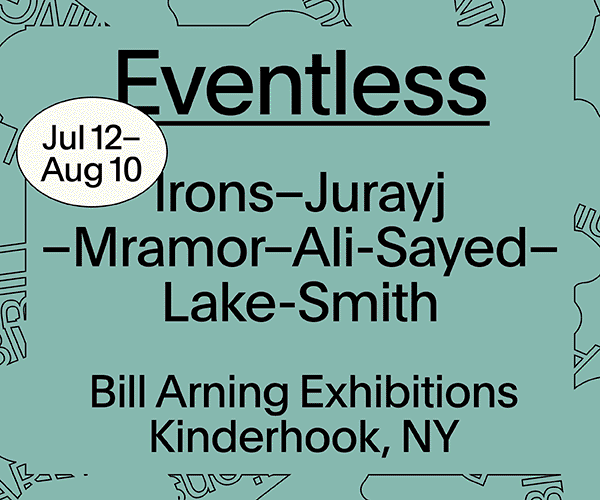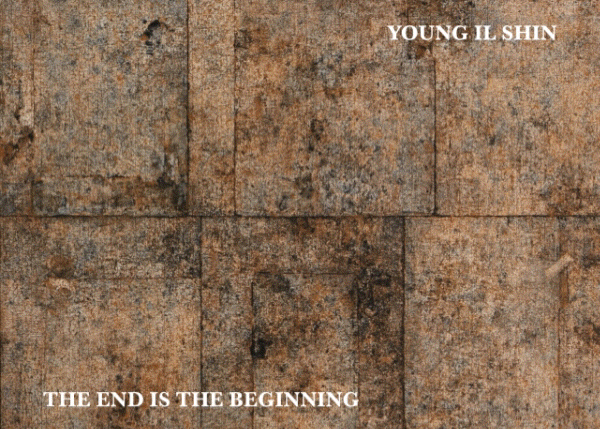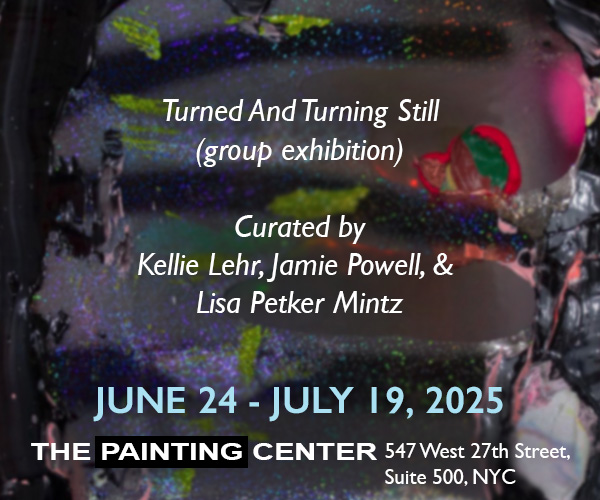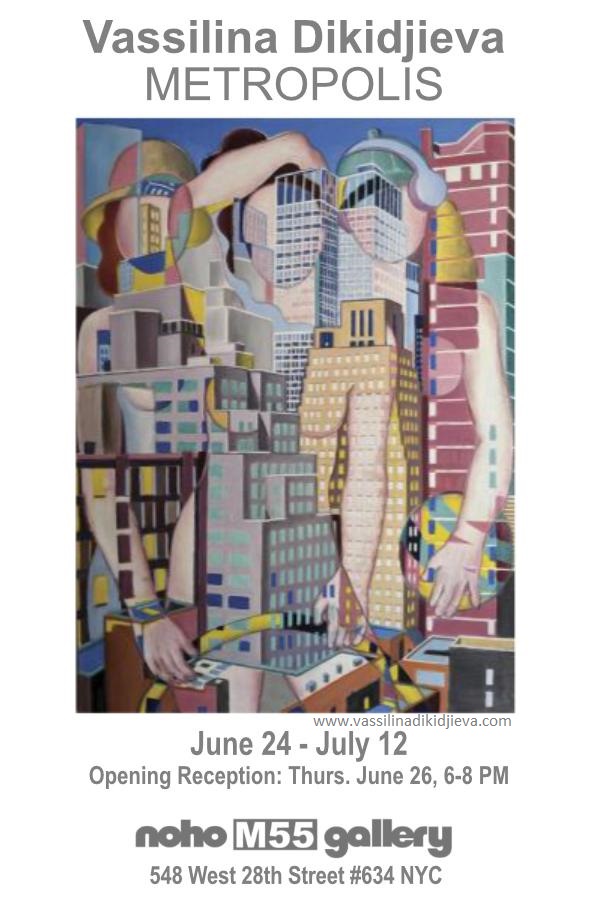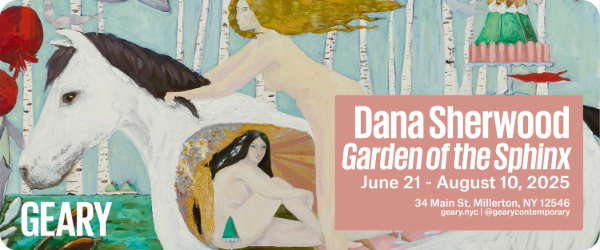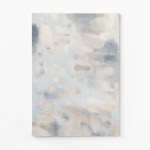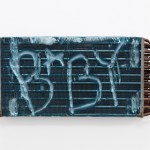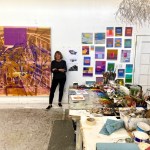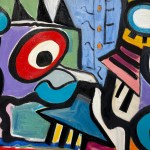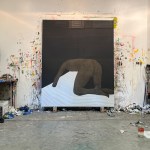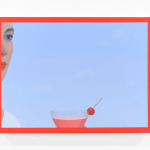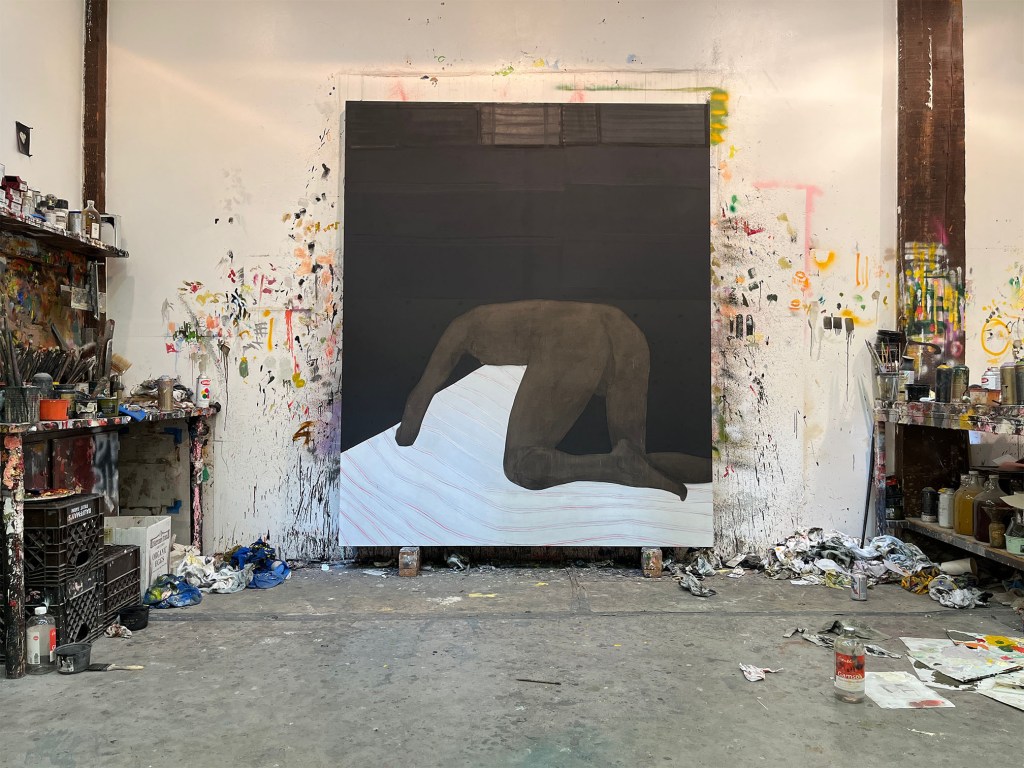
Contributed by Jonathan Stevenson / Entering Tommy White’s cave-like Crown Heights studio, you’re struck by the fathomless matte black on his canvases, fate knocking at the door. It can serve both to seduce and to dare, drawing you in and pushing you out. Two large pictures brace the left wall. In the first, Interior (Dusk), a muscular naked body, head invisible, crawls on what looks like a bed into the black. In the second, Interior (Pile), a black shape approximating a flattened sphere, begging but not quite able to resolve as something cognizable, emerges from the black. Each painting poses a puzzle, one about what the figure, evidently male, is seeking and the other about what the shape is. The clues, indicative yet insufficient, are trace outlines of grates and windows, which provide both insularity and access and here, owing to their obscureness, suggest privacy.

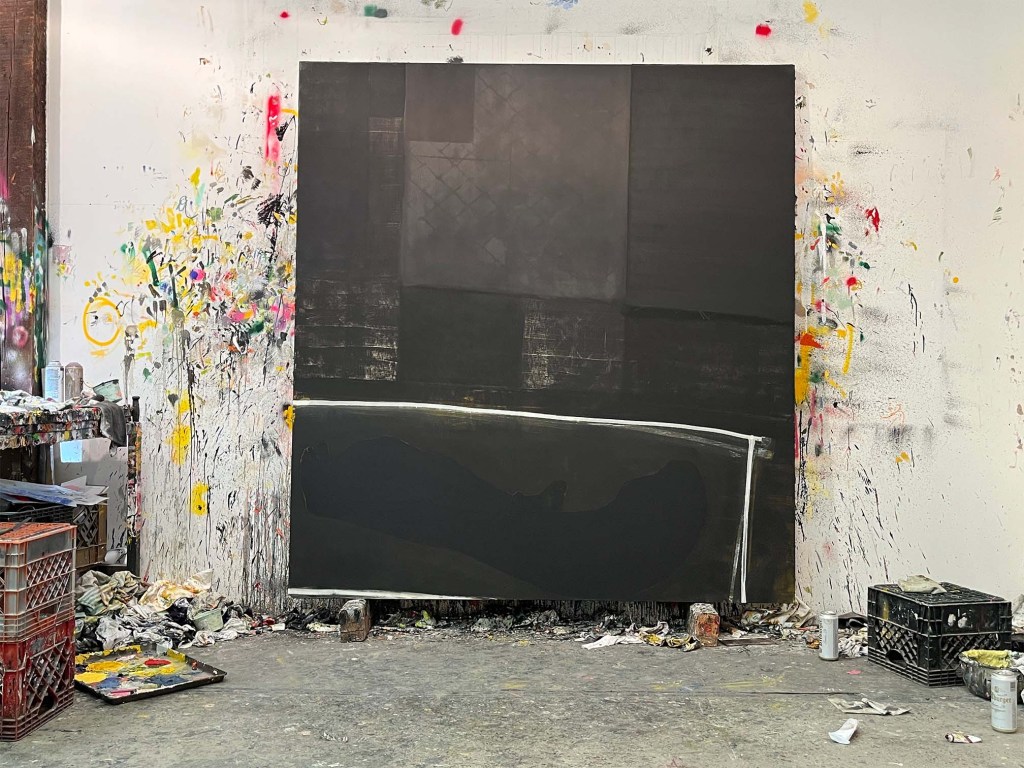
In those two big paintings you could go all Freudian and discern, say, sexual quest and the surfacing of lust. You would miss a lot. If White is hinting at these phenomena, he is doing so at least in part to illustrate something more elusive: the artist himself grappling with the limitations of the means at his disposal. Reveal too much by way of representation, and the picture is a cul-de-sac. Reveal too little by resort to abstraction, and it’s an enigma. The baseline idea is that the artist needs to seek a kind of visual equilibrium. That may be what White is mainly about in technical terms, and he operates on a sliding scale. He might employ relatively casual, hand-drawn line to save an especially opaque piece from inscrutability, as in the magisterially stark Minor Place. Many if not most of his paintings and drawings have representational, often figurative, elements. Those may be clear, but he unfailingly injects enough WTF to sustain not merely curiosity but galvanizing vexation.
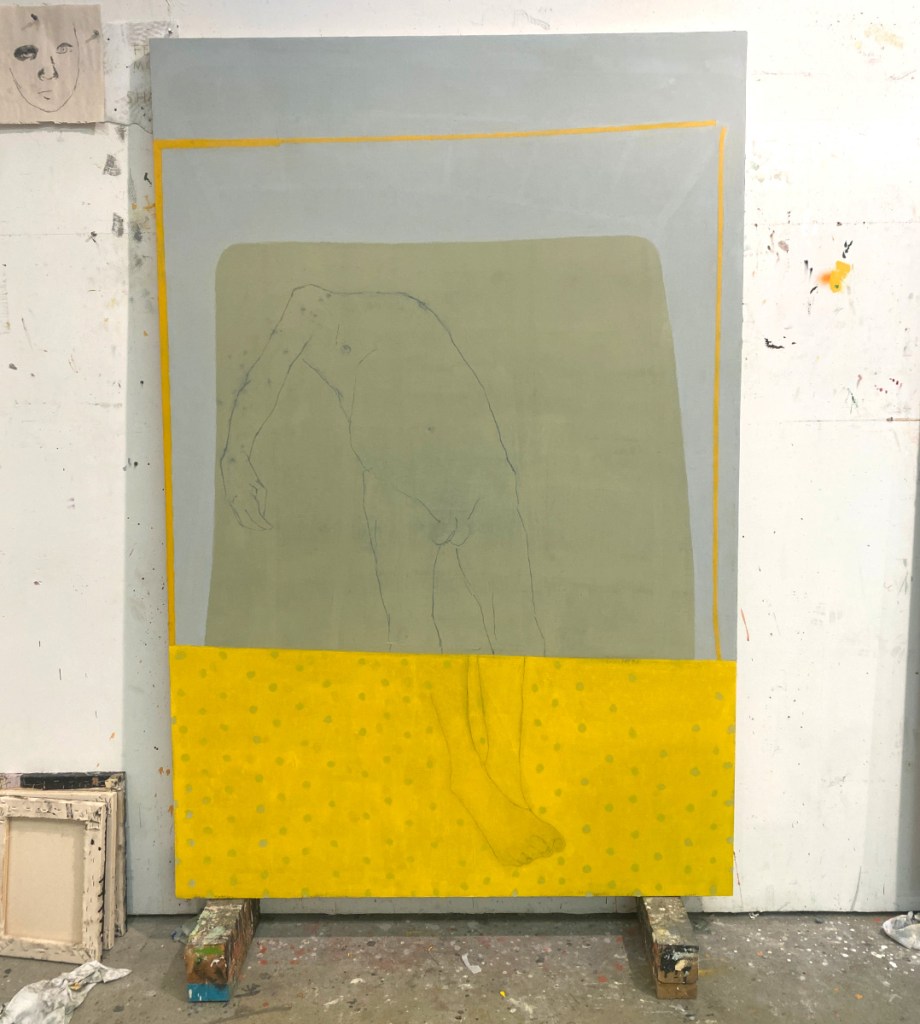
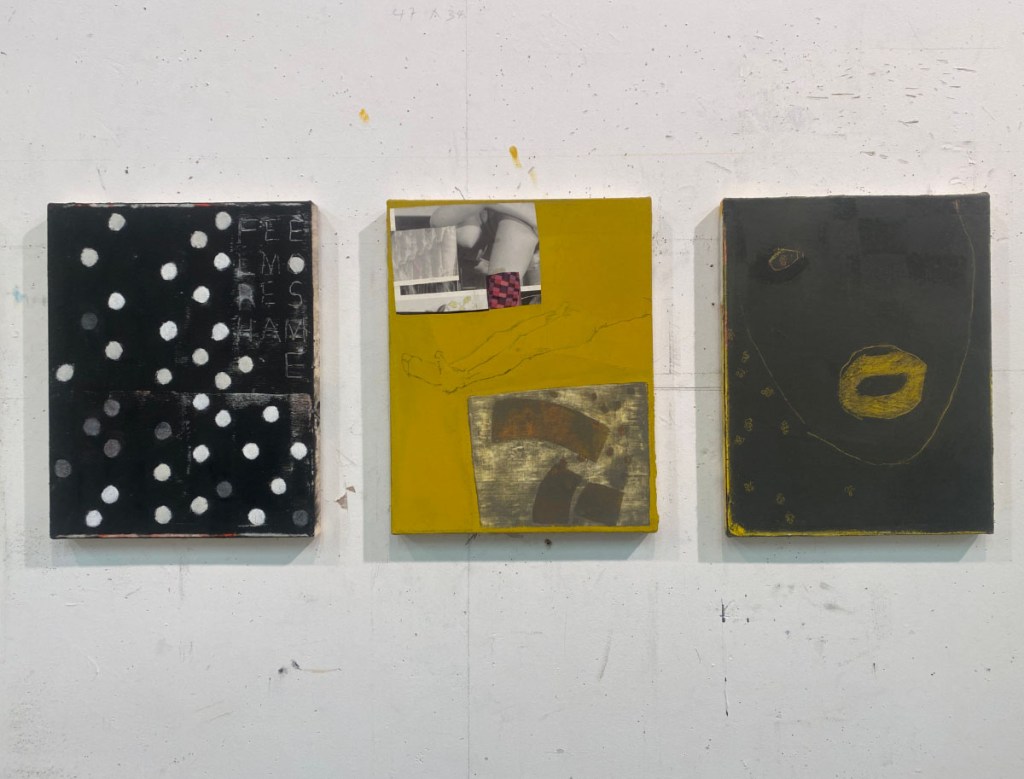
White’s imperative is to fully mine his capacity to explore a given subject within the four corners of a canvas. The mechanisms of his endeavor are assured technique – he frequently obliterates brushstroke in pursuit of depth – and fearless commitment to the irreducibility of life’s complexity. On the far wall of the studio, Interior (Morning) looks incongruously cheerful owing to its sea-green background and the confetti-like daubs fluttering near the top. That much could almost be mistaken for a bubbly Laura Owens painting. At the bottom, though, is a pale white human trunk, thighs to neck, supine and distressed, back to the viewer, resonant of Francis Bacon’s “fugitive bodies” or Leon Golub’s squad paintings from the 1980s. The piece seamlessly presents the elements of its own success: the celebratory overlay draws you in, the seductive color gets you comfy, and that lugubrious trunk just gnaws at you. The overarching tension is between the pastoral and the mortal, a classic theme uniquely and mercilessly developed.
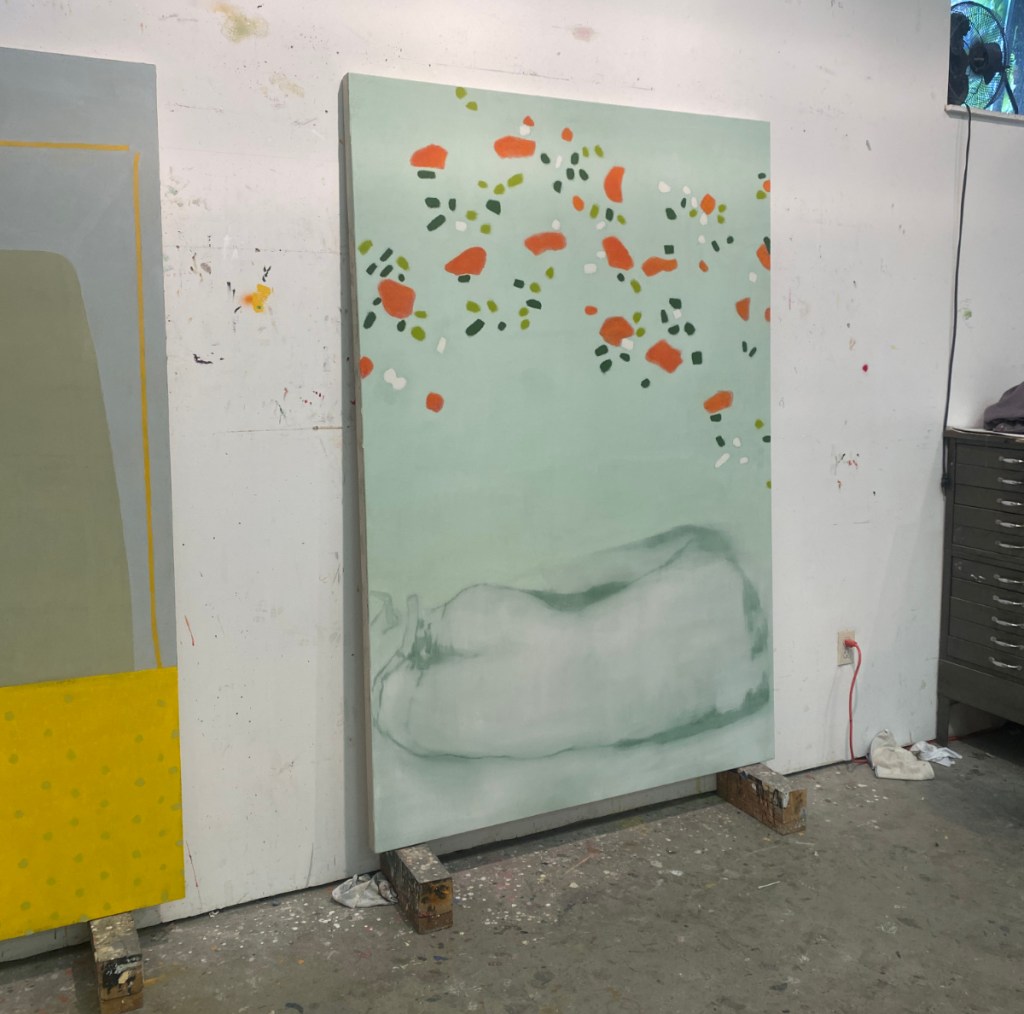
In Lonely Now, the elemental but eerily loaded painting on the next wall, a nebulous yellow expanse encroaches on a cornered, pudgy soul in a red dress with white frills sporting a hairy chest and a five-o’clock shadow. The subject seems to be an employee in a diner, gender ambiguity apparently irksome, who feels alarmed, angry, or humiliated. A sneering patron dined and dashed. It’s a scene in a horror movie like John Carpenter’s The Fog, the victim expendable. A celebrity walked into the joint but left abruptly. Scornful kids, having gotten a reaction, are causing a ruckus. That so many scenarios readily arise is itself an accomplishment. White does offer delicate circumscription in the form of the letters A, J, and R in the top right corner. They are not his, nor do they scan as Johns-esque symbols, so they probably refer to people in his life. Yet although the initials affirm a strongly personal strain in the piece, they do not steer the scene into any particular narrative. You are left guessing, albeit with more information. True to a creed, White himself is not inclined to help you understand. Let the painting do the talking.

Long a noted New York painter and teacher, White co-founded, with Jim Lee, the non-profit Brooklyn project space CLEA RSKY, and, with Cate Holt, the non-profit gallery Springs Projects, which opened in Dumbo in 2023. In two years there, White and Holt have mounted a series of scintillatingly edgy group shows, focusing on artists who eschew trend and buzz in favor of more constant generational torments – confinement and expanse, confrontation and escape, finitude and forever, and the sheer passage of time. This purview seems in line with White’s agenda as a painter, which is at once interior and universal: not so much to ponder the challenge of being a white man or a Black woman, a gay woman or a straight man, a binary or non-binary person, or any permutation thereof, as to pit himself against existential constraints to arrive at an increment of order and grace. In this he prevails.
Springs Projects, 20 Jay Street, Suite 311B, Brooklyn, NY. Co-founder: @locatecate
CLEA RSKY, New York and Mexico City. Co-founder: @jimleestudio
About the author: Jonathan Stevenson is a New York-based policy analyst, editor, and writer, contributing to the New York Times, the New York Review of Books, and Politico, among other publications, and a regular contributor to Two Coats of Paint.

